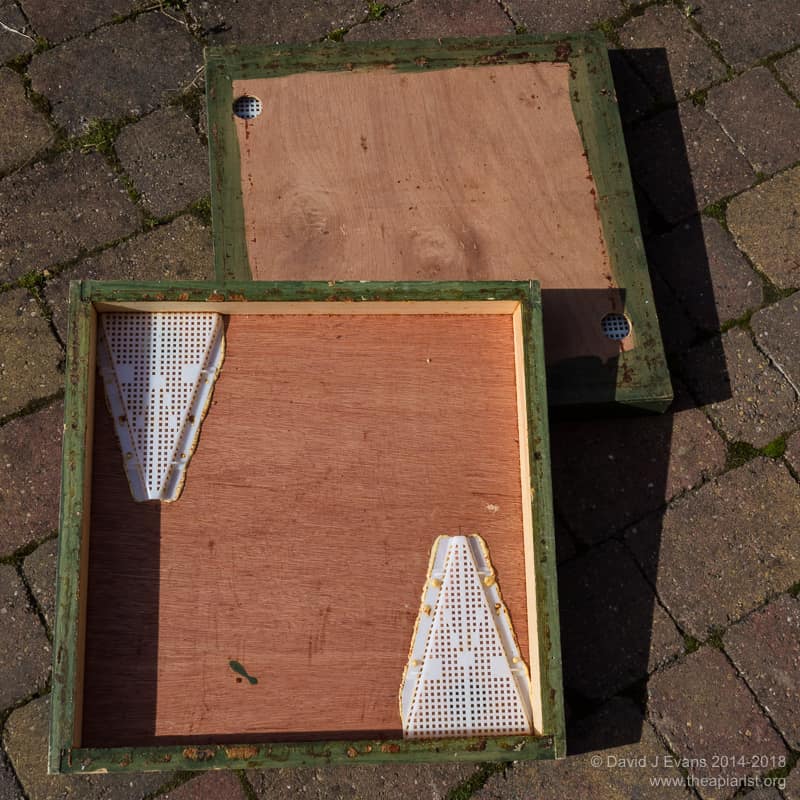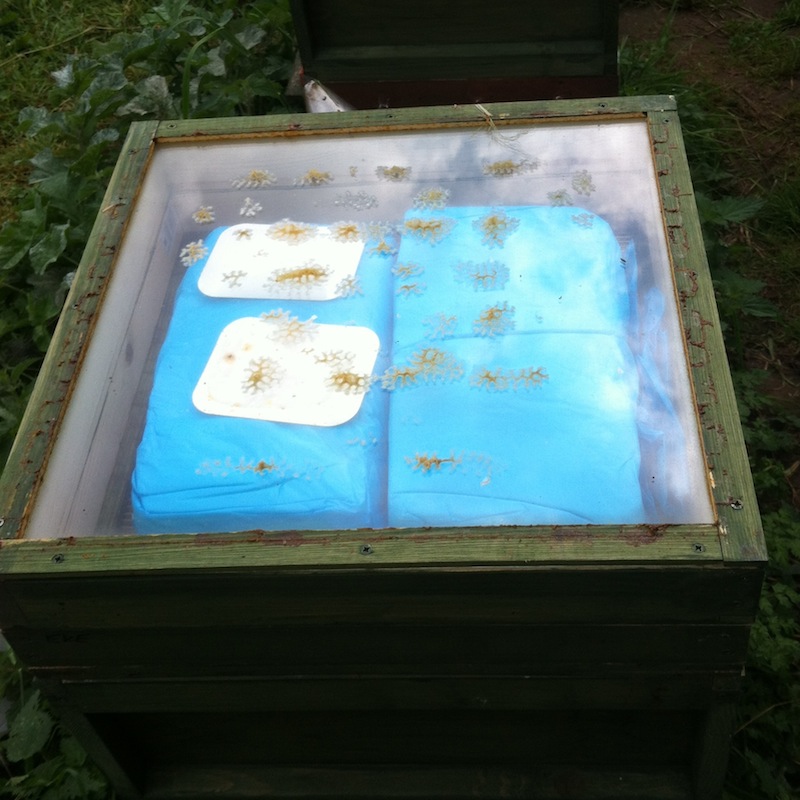I love the smell of propolis in the morning
[to paraphrase Lieutenant Colonel Bill Kilgore] … actually, I love the smell of propolis more or less anytime. During the quiet winter period the warm, spicy scent of propolis is a lovely reminder of hive inspections during warmer times. It’s one of the characateristic smells I associate with beekeeping, along with the lemony scent of the alarm pheremone – something best avoided – and the pretty rank smell of brood frames sterilised in the steam wax extractor (definitely best avoided).

Clearer boards …
A couple of night ago I extracted the summer honey collected by the bees since moving to Scotland. There were only a small number of supers to extract; many of the colonies I brought North were nucs and have only recently moved up into full boxes, coupled with it being a rather poor summer. I’d added clearer boards under the supers the day before removing them then stacked the supers on top of my honey warming cabinet for a couple of days until I had time to do the extracting. By keeping the supers warm – the temperature in the headspace above the top super in the stack was only about 30ºC – the honey is much easier to extract than when cold and viscous.
The other effect of warming the supers is that the propolis softens and then sticks to just about everything it comes into contact with. The frames in these supers hadn’t been moved for 6-7 weeks and were heavily propilised to the runners and each other. Inevitably, prising the frames out and manhandling them in and out of the extractor meant my hands got covered with propolis. Like cooking with onions, the smell of propolis lingers well into the following day, irrespective of how well you wash your hands.
It’s been a rather poor second half of the season and many of the frames were uncapped. However, the honey – even when warmed – couldn’t be shaken out of the frames indicating that the water content was low enough to not ferment (and when measured it was almost all about 17%). The honey was sufficiently runny to filter through coarse and fine filters directly into 30 lb honey buckets for storage before jarring. This is the first honey produced by my bees in Fife and I’ll have to get some new labels designed that correctly lists its provenance.

Fondant block and Apiguard
Finally, before disappearing for a few days to Andalusia I added a queen excluder and an empty super to every hive to accommodate a 12.5 kilo split block of bakers fondant. This is a really easy way to feed colonies up for the autumn. They take the fondant down more slowly than they would take thick (2:1 w/v) syrup which I think ensures that the queen has ample space to keep laying – these will be the important winter bees that get the colony through to the next season. It also doesn’t seem to encourage either robbing or wasps – perhaps because there’s nothing to spill. It’s also a whole lot easier to prepare … just slice a block in half with a breadknife. I simply add the fondant face down over the queen excluder, reduce the entrance if the colony isn’t at full strength, close them up and walk away*.
- I also added a tray of Apiguard to a couple of colonies as the first stage in autumn Varroa treatment. The majority of the colonies are going to receive vaporised oxalic acid but I wanted to do a side-by-side comparison of the effect on queen laying, so two colonies in one apiary received Apiguard.
Join the discussion ...